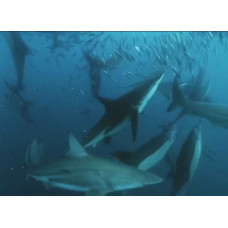Conscious modification of community structure or management of certain species interactions using biological methods. For example, by introducing predatory fish into a pond, it is possible to achieve a noticeable decrease in the number of planktonophagous fish, an increase in the number of algophagous crustaceans, a decrease in the biomass of algae that give the water an unpleasant odor and color.
Changing fish populations in water bodies as part of watershed management can promote desirable changes in aquatic ecosystems suffering from eutrophication, characterised by the dominance of phytoplankton that contribute to ecosystem restoration, which is an application of restoration ecology. Ponds or lakes can have alternative stable conditions: one with a high population of algae, little other plant life and turbid water, the other with a low population of algae, a diverse plant life and clear water. In addition to preventing excess nutrients such as phosphorus and nitrates, the removal of certain fish species adapted to turbid water can facilitate the transition from one steady state to the other, an application of dynamical systems theory. Fish species can be removed by poisoning, harvesting or introducing predatory species. As the process will result in a different fish community, it will affect recreational and commercial fishermen, whose cooperation or opposition is important.
Lake Zwemlust, a hypertrophic pond used as a swimming pool in the Netherlands, with a surface area of 1.5 hectares and an average depth of 1.5 metres, was treated in March 1987. The initial transparency of the Secchi disk was only 0.3 metres, less than the maximum of 1 metre allowed for swimming pools in the Netherlands. During the first summer, the transparency of the Secchi disk increased to at least 2.5 metres, the maximum depth of the lake. The lake was drained and 1500 kg of planktonic and benthic fish, such as bream, were caught by seine and electrofishing. The pond contained 1500 juvenile northern pike and several adult redfin, whose offspring served as food for the pike. Branches, roots of Nuphar lutea and shoots of Chara globularis were added as vegetation and cover. The cost was covered by the local water board and offset by increased patronage from swimmers. In the summer of the second year, 1988, there was considerable plant growth and, possibly due to a lack of predation by carp or gudgeon, a dramatic increase in snails, including Radix peregra var. ovate, the host of Trichobilharzia ocellata, which causes schistosome dermatitis, an itchy swimmer.
In addition to grazing by zooplankton, the excessive growth of macrophytes removed enough nutrients from the water to prevent algal blooms by phytoplankton.
Biomanipulation
Tags: Biomanipulation

